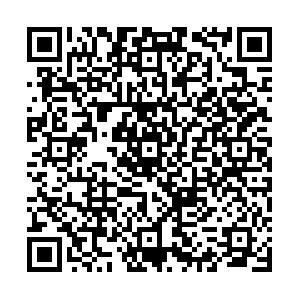| [1] |
杨晓. 让"身体"回到教学[J]. 全球教育展望, 2015, 44(2): 3-10. https://www.cnki.com.cn/Article/CJFDTOTAL-WGJN201502002.htm
|
| [2] |
黎兴成, 李中国. 论教学的对象思维及其超越[J]. 教育学术月刊, 2022, 358(5): 97-105. https://www.cnki.com.cn/Article/CJFDTOTAL-YANG202205014.htm
|
| [3] |
张良. 论具身认知理论的课程与教学意蕴[J]. 全球教育展望, 2013, 42(4): 27-32, 67. https://www.cnki.com.cn/Article/CJFDTOTAL-WGJN201304006.htm
|
| [4] |
孟宪云, 刘馥达. 走向具身教学: 学业负担问题消解的逻辑与路径[J]. 课程. 教材. 教法, 2022, 42(2): 73-79. https://www.cnki.com.cn/Article/CJFDTOTAL-KJJF202202011.htm
|
| [5] |
杨晓, 毛秀荣. 从"离身"到"具身": 学生思维进阶的特征与路径[J]. 当代教育与文化, 2020, 12(6): 24-29. https://www.cnki.com.cn/Article/CJFDTOTAL-GSJG202006005.htm
|
| [6] |
周格. 戏剧性教学: 试论具身教学的进路[J]. 全球教育展望, 2021, 50(6): 27-38. https://www.cnki.com.cn/Article/CJFDTOTAL-WGJN202106003.htm
|
| [7] |
胥兴春, 李晴. 具身视角下儿童教育中身体的缺位与回归[J]. 当代教育科学, 2022(1): 13-22. https://www.cnki.com.cn/Article/CJFDTOTAL-SDJK202201003.htm
|
| [8] |
李莉莉, 焦江丽. 具身认知理念下教育教学改革的可能与限度[J]. 当代教育科学, 2022(8): 39-46. https://www.cnki.com.cn/Article/CJFDTOTAL-SDJK202208006.htm
|
| [9] |
张广君. 教学本体论[M]. 兰州: 甘肃教育出版社, 2002: 75, 155.
|
| [10] |
佘时珍. 教化与修身并重——中国传统文化中"成人"方式对当代的启示[J]. 湖北大学学报(哲学社会科学版), 2018, 45(5): 29-35. https://www.cnki.com.cn/Article/CJFDTOTAL-HDZS201805006.htm
|
| [11] |
格明福, 徐蕾. 儒家"身体"正名[J]. 中州学刊, 2011(6): 163-166. https://www.cnki.com.cn/Article/CJFDTOTAL-ZZXK201106045.htm
|
| [12] |
吴新颖, 严培. 儒家教化本质及当代价值[J]. 湖南大学学报(社会科学版), 2017, 31(1): 52-55. https://www.cnki.com.cn/Article/CJFDTOTAL-HDXB201701011.htm
|
| [13] |
杨伯峻. 孟子译注: 第2册[M]. 7版. 北京: 中华书局, 1988: 79-80.
|
| [14] |
王中江. 简帛文明与古代思想世界[M]. 北京: 北京大学出版社, 2011: 214-215.
|
| [15] |
陈立胜. 王阳明"万物一体"论: 从"身-体"的立场看[M]. 上海: 华东师大出版社, 2008: 74, 276.
|
| [16] |
张再林. 触觉的双重性: "恻隐之心"之所以成为可能[J]. 浙江社会科学, 2019(11): 76-86, 158. https://www.cnki.com.cn/Article/CJFDTOTAL-ZJSH201911009.htm
|
| [17] |
说文解字[M]. 上海: 上海书店, 2016: 279, 381.
|
| [18] |
孟子集注[M]. 济南: 齐鲁书社, 1992: 45.
|
| [19] |
朱子全书: 第15册[M]. 上海: 上海古籍出版社, 2002.
|
| [20] |
黄帝内经: 全二册[M]. 北京: 中华书局. 2016: 370, 297.
|
| [21] |
二程集: 第3册[M]. 北京: 中华书局. 2004: 33, 366.
|
| [22] |
徐复观. 中国思想史论续集篇[M]. 上海: 上海书店, 2004: 237.
|
| [23] |
杜维明文集: 第5卷[M]. 武汉: 武汉出版社, 2002.
|
| [24] |
王开元. 普遍性的追寻: 何谓孟子的"恻隐之心"?[J]. 孔子研究, 2020(2): 118-124. https://www.cnki.com.cn/Article/CJFDTOTAL-KZYJ202002011.htm
|
| [25] |
杜维明. 仁与修身儒家思想论集[M]. 胡军, 丁民雄, 译. 北京: 生活·读书·新知三联书店, 2013: 6, 7.
|
| [26] |
申绪璐. 论先秦儒家的教化思想[J]. 江淮论坛, 2011(4): 67-73. https://www.cnki.com.cn/Article/CJFDTOTAL-JHLZ201104010.htm
|
| [27] |
杨庆峰, 张国滨. 以身体为焦点: 由现代技术引发的伦理问题[J]. 东南大学学报(哲学社会科学版), 2009, 11(6): 30-35, 126. https://www.cnki.com.cn/Article/CJFDTOTAL-DNDS200906010.htm
|
| [28] |
王嘉军. 列维纳斯的身体思想及其身体美学意义[J]. 山东社会科学, 2018(4): 92-98. https://www.cnki.com.cn/Article/CJFDTOTAL-SDSK201804013.htm
|
| [29] |
柏拉图. 斐多: 柏拉图对话录之一[M]. 杨绛, 译. 北京: 三联书店, 2011: 27.
|
| [30] |
黄宗羲全集: 第8册[M]. 浙江: 浙江古籍出版社, 2005: 114.
|
| [31] |
张再林. 触觉的双重性: "恻隐之心"之所以成为可能[J]. 浙江社会科学, 2019(11): 76-86, 158. https://www.cnki.com.cn/Article/CJFDTOTAL-ZJSH201911009.htm
|
| [32] |
王中江. 简帛文明与古代思想世界[M]. 北京: 北京大学出版社, 2011: 218.
|
| [33] |
王韶芳, 张广君. 《学记》教学观的身体之维[J]. 现代大学教育, 2021, 37(2): 31-37, 94, 111-112. https://www.cnki.com.cn/Article/CJFDTOTAL-YSJG202102005.htm
|
| [34] |
周文彰, 郭蓉. 论儒家传统文化及其当代价值[J]. 北京联合大学学报(人文社会科学版), 2019, 17(1): 1-6, 16. https://www.cnki.com.cn/Article/CJFDTOTAL-BJLB201901001.htm
|
| [35] |
陈立胜. "视"、"见"、"知"——王阳明一体观中的体知因素之分析[J]. 孔子研究, 2006(4): 92-102. https://www.cnki.com.cn/Article/CJFDTOTAL-KZYJ200604010.htm
|
| [36] |
李渔. 《闲情偶寄》选注[M]. 北京: 中国戏剧出版社, 2009.09: 187.
|
| [37] |
余红. 万物皆备我身——王门泰州学身体观的一种诠释[J]. 哲学动态, 2009(4): 53-59. https://www.cnki.com.cn/Article/CJFDTOTAL-ZXDT200904009.htm
|
| [38] |
陈立胜. "身不自身": 罗近溪身体论发微[J]. 西北大学学报(哲学社会科学版), 2012, 42(1): 10-18. https://www.cnki.com.cn/Article/CJFDTOTAL-XBDS201201004.htm
|
| [39] |
周卫勇, 曾继耘. 生生之道: 先秦儒家教化哲学的理论基础——以《中庸》为主体的研究[J]. 教育学报, 2018, 14(5): 102-108. https://www.cnki.com.cn/Article/CJFDTOTAL-XKJY201805015.htm
|
| [40] |
列·符·赞科夫. 和教师的谈话(大教育书系)[M]. 管海霞, 译. 武汉: 长江文艺出版社, 2017: 28.
|

 点击查看大图
点击查看大图



 下载:
下载: